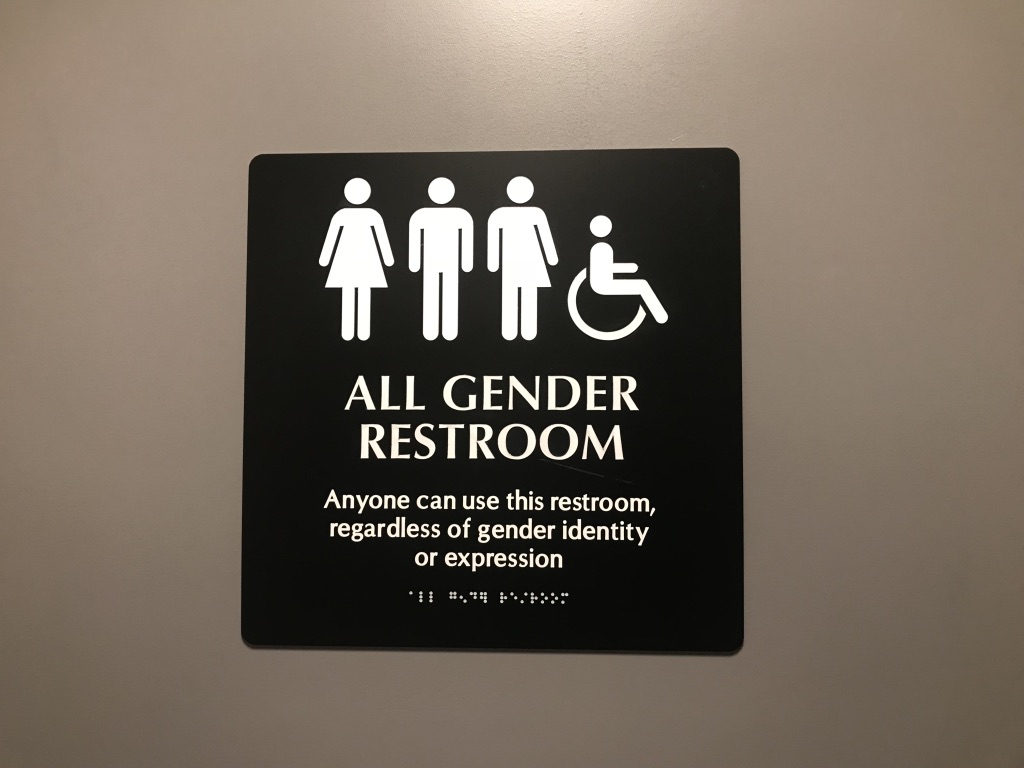There is no reason to delay the use of signage like this.
/I understand that not everyone is ready for universal restrooms.
While I may use a restroom at a place like Oberon in Cambridge, MA, which has a large restroom of stalls and urinals used by all genders simultaneously, it's simply too much for some people.
When genitals are privately exposed for the purpose of elimination, they must only be privately exposed amongst their own kind. Strict segregation of penis and vulva at all times in public spaces is a nonnegotiable for many people.
Note: Vulva is the correct term for the external female sex organ. The vagina is actually the internal genital tract extending from the vulva to the cervix, but for some reason, it is often used incorrectly in place of the anatomically-correct vulva.
Someday, universal restrooms will be commonplace. People of all genders will enter a single space for the purpose of elimination, and no one will give a damn. Future generations will undoubtedly scoff at our bizarre need for genital segregation in the same way most of us scoff at the idea of segregating the races on a bus, a lunch counter, or a school.
But some of us aren't ready for genital desegregation yet. I understand. Change is hard. Fear is a powerful force, even when it's unwarranted and misguided. Altering a longstanding norm can take time.
But in the cases when a public restroom is a single serve space with a lock on the door, why can't we at least dispose of the male and female distinctions and use something more appropriate like this outstanding sign located at RJ Julia Booksellers in Middletown, CT?
Not only is this sign more respectful and inclusive to all genders, but it makes no sense for three women to be waiting for their single use restroom while the restroom designated for men is empty.
From a perspective of efficiency, this is a change that must be made.
More importantly, signage like this demonstrates the necessary level of respect, inclusivity, and civility that should be afforded to people of all genders, as well as a much needed acknowledgement that gender is not always a binary proposition, and that all people deserve to live their most authentic lives absent of stigma, bias, or fear.
Gender binary signage should already be a thing of the past, at least in the case of single use restrooms. This is a small but meaningful step that even the most ardent traditionalists and most staunch genital segregation advocates would be hard pressed to oppose.
If you own a business with single-use restrooms equipped with gender binary signage, change it today. Make the world a little more efficient for all human beings and a little more accepting to people of all genders and forms of gender expression.

